Original Title: "Silicon Valley Doesn't Understand Money"
Written by: Marty Bent, Founder of TFTC
Translated by: Tia, Techub News
"Technology makes the world more efficient, but money makes individuals poorer. Only when the monetary system no longer dilutes individual value can the prosperity brought by technology be universally shared. Bitcoin, with its deflationary monetary logic, offers a new possibility for this balance—it is moving from an emotional bubble to a part of macro order."
I quoted a widely circulated tweet by Nikita Bier on Twitter last week.
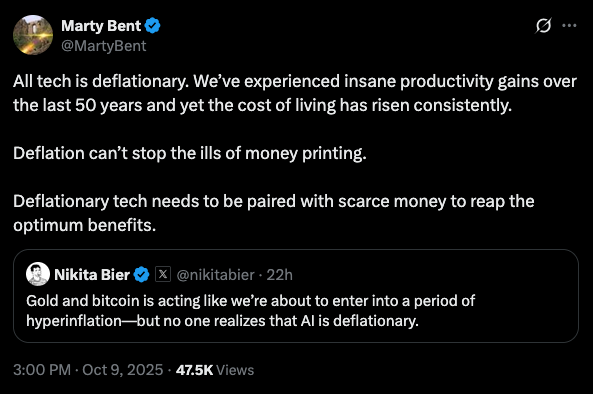
He expressed confusion over a phenomenon: the prices of Bitcoin and gold are rising, and both individuals and institutions are reallocating capital in preparation for a multipolar world. This new world will have higher inflation rates, as governments and central banks will print money and run high fiscal deficits to cover the problems they have created over the past fifty years.
His question was: how can buyers of Bitcoin and gold not see that AI has already arrived? AI is about to take over the world, and it is deflationary!
However, the irony of this tweet is incredible—because, as described above, a significant portion of the stimulus policies and fiscal deficits are driven by the desire to win the global AI arms race.
Governments will issue debt, monetize existing debt, subsidize grid infrastructure, data centers, and the localization of critical manufacturing capabilities.
And all of this will be inflationary.
The end result may be that we can make a request to a large language model (LLM) to conduct in-depth research on a relatively complex topic, and then a few minutes later, it can provide us with an extremely detailed report at a cost of just a few cents.
Indeed, in the long run, if these AI models truly live up to their reputation, they may ultimately replace white-collar jobs that cost companies hundreds of thousands of dollars each year.
However, the benefits brought by this productivity increase will be completely drowned out by the massive money printing that enables them.
How do I know this will be the case?
Because it has always been this way.
Another irony in Nikita's tweet is that he seems completely unaware that technology has always been deflationary, and for centuries we have witnessed breathtaking technological deflation. Here is a photo of the first computer built by the U.S. Army.
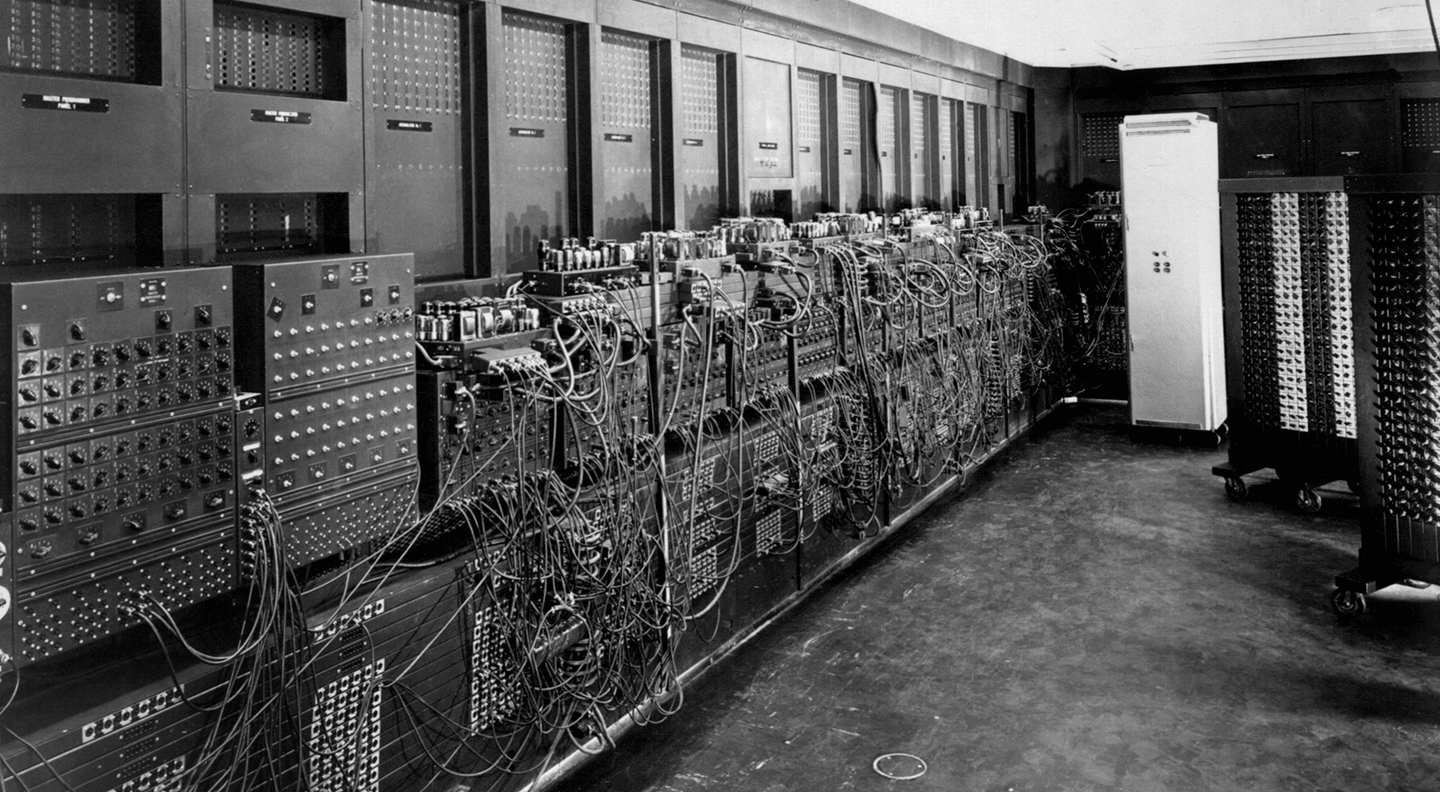
Here is some information about its size, computing power, and manufacturing cost.
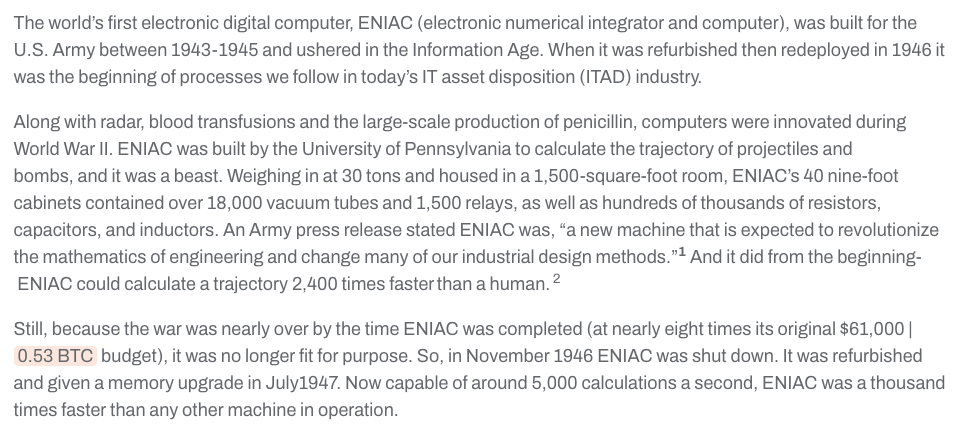
(Source: simslifecycle.com)
Adjusted for today's inflation, this monster cost about $8 million to build in 1946.
And today, people would not even consider the ENIAC a "computer"—it looks too clunky. Modern computers use chips that are 100 million to 1 billion times faster than the ENIAC.
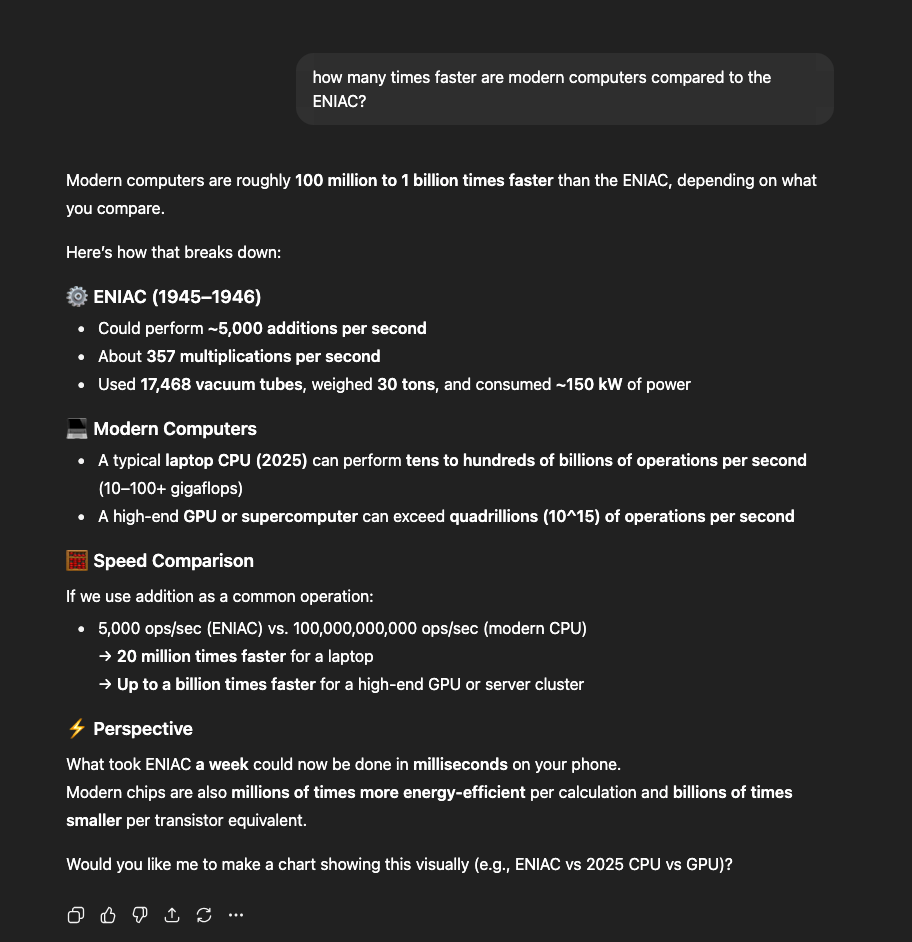
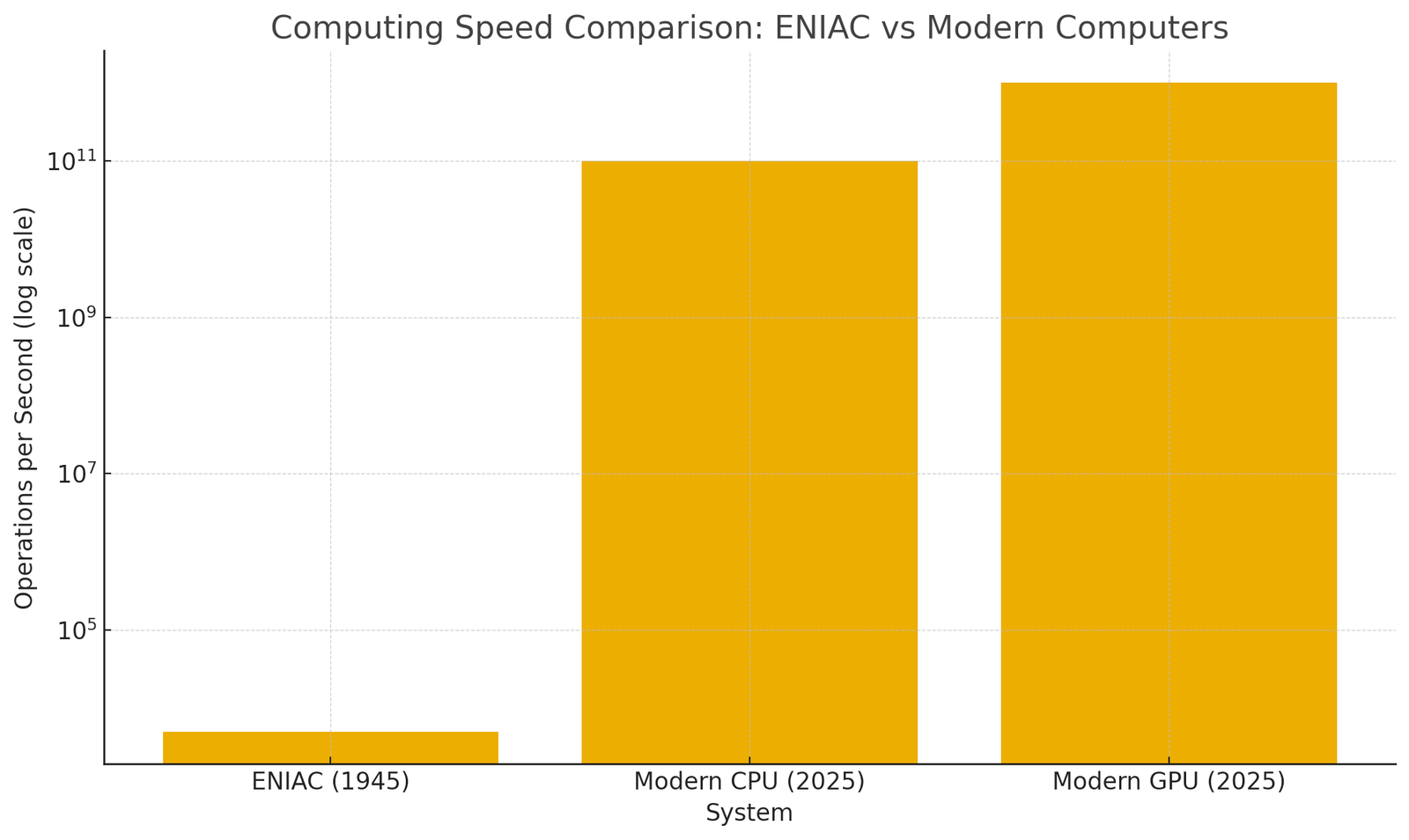
In 1946, the U.S. military spent $8 million to build the ENIAC (the first computer); by 2025, you could buy a MacBook with performance 1 billion times faster for just $1,000.
This is astonishing deflation.
However, despite such severe technological deflation, the cost of living has continued to rise throughout my life, and it has accelerated in recent years.
The power of the money printing machine is several orders of magnitude stronger than technology-driven deflation.
AI will not change this.
Years ago, there was a widely circulated chart that truly revealed this issue. (I would love to see this chart updated to a post-COVID version—I suspect it would look even worse.)
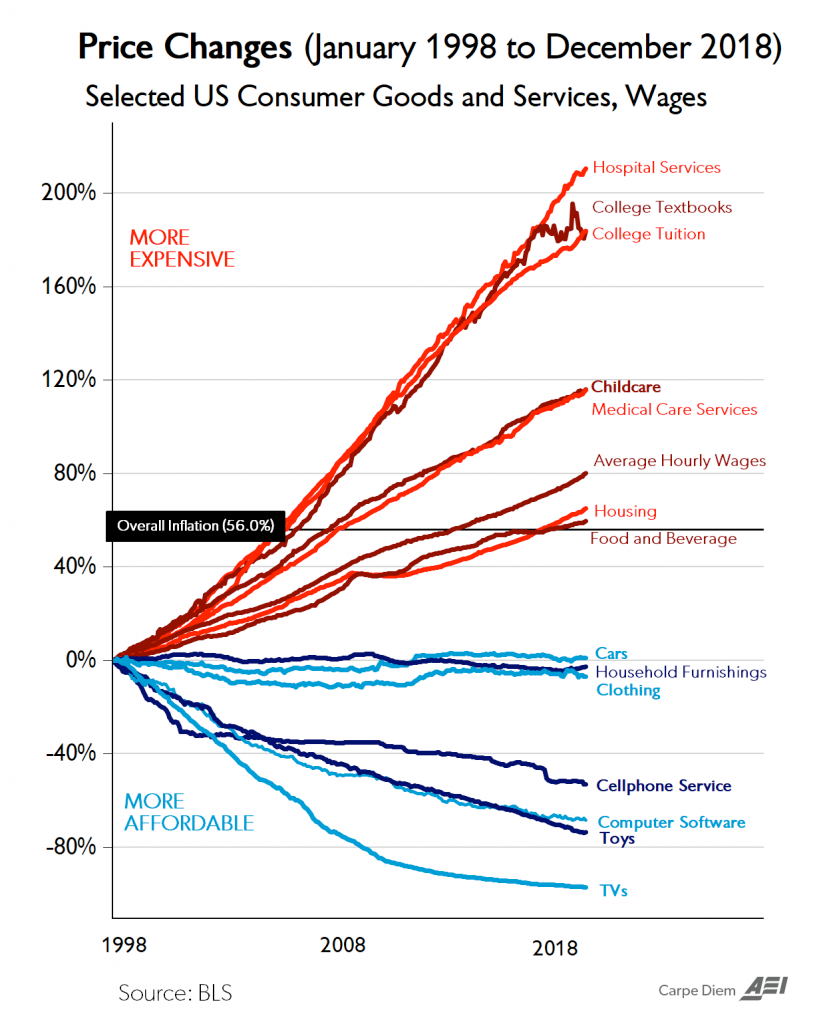
Money printing disrupts capital allocation.
Once money is printed, it must flow somewhere.
The chart shows that over the past 27 years, funds have flowed into the market from the "money faucet," pushing up the prices of things deemed essential for maintaining life in 2025: healthcare, housing, education, food, and childcare.
While saving money on big-screen TVs, smartphones, and video games is nice, it is not enough to counteract the rising prices of these high-cost necessities that are key to maintaining a decent life.
Technological deflation certainly exists, and it undoubtedly benefits humanity.
But unfortunately, humanity cannot truly enjoy all the dividends of technological deflation—because people are forced to fight against the powerful forces of monetary inflation.
If we want to live in a society where everyone has exponentially greater opportunities to enjoy a high quality of life—a world that can fully benefit from technological advancements—then technological deflation must be combined with deflationary currencies like Bitcoin.
When technology makes us more efficient, allows the market to provide a greater variety of goods and services at lower costs, and enables humanity to progress, people should be able to buy more for less and store their excess productivity in a currency that works for them rather than against them.
Until then, all the technological deflation we see in the market is bittersweet.
We are indeed making rapid progress, but not everyone feels an improvement in their quality of life.
Many people feel the opposite.
For some reason, most people in Silicon Valley seem to not understand this simple fact.
Retail investors will not drive Bitcoin's 2025 market like they did in 2017 and 2021
James Check made a sobering observation:
In this market cycle, retail investors may not return with the same enthusiasm as they did in 2017 and 2021.
The simple fact is: ordinary Americans are out of money.
While institutional investors quietly accumulate Bitcoin through ETFs and complex derivatives, ordinary people are being overwhelmed by rising living costs.
During this health insurance enrollment season, health insurance premiums have risen by 25% to 60% across the United States.
Germany has just announced plans to raise the retirement age to 72, while discussions are underway in the U.S. to raise the retirement age to 67.
For those without financial assets, their quality of life has significantly deteriorated—real living costs have soared while wages have stagnated.
"I don't think retail investors have money. I don't think they have money to enter the market again." — James Check
This cycle is fundamentally different from previous ones.
The frenzy phase driven by retail FOMO (fear of missing out) may not occur because retail investors simply do not have disposable income for speculative investments.
Instead, we are witnessing something deeper:
Institutional investors are beginning to recognize Bitcoin's role in the "debasement trade."
While this may seem subdued compared to the lively markets of the past, it signifies that Bitcoin is gradually maturing into a true macro asset—an asset that can appreciate without the enthusiasm of retail investors.
免责声明:本文章仅代表作者个人观点,不代表本平台的立场和观点。本文章仅供信息分享,不构成对任何人的任何投资建议。用户与作者之间的任何争议,与本平台无关。如网页中刊载的文章或图片涉及侵权,请提供相关的权利证明和身份证明发送邮件到support@aicoin.com,本平台相关工作人员将会进行核查。



